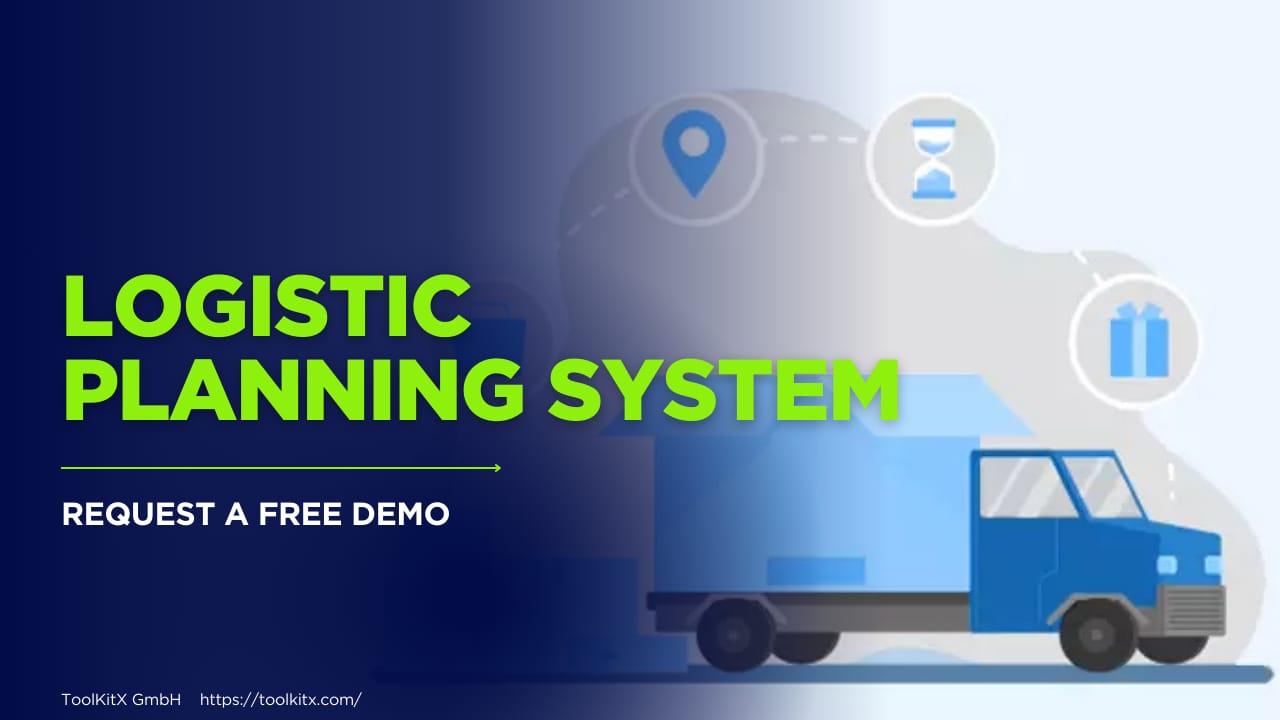- aaron's Newsletter
- Posts
- Empower Teams with Comprehensive Logistics Planning Hub
Empower Teams with Comprehensive Logistics Planning Hub
Empower Teams with Comprehensive Logistics Planning Hub

Logistic Planning System
At the heart of modern supply chains lies logistics planning software—sometimes called freight orchestration platforms—that unifies every stage of cargo movement, from vendor procurement to final delivery confirmations. By integrating real-time telemetry from trucks and vessels, live inventory updates, and predictive analytics, this solution eliminates scattered spreadsheets and disjointed email threads, presenting planners with one cohesive dashboard for demand insights, route optimization, and stock management.
The platform’s intelligent forecasting engines leverage historical order data, promotional events, and external economic indicators to anticipate peaks in customer demand, triggering automated replenishment cycles that keep inventory levels balanced. Rich visualization tools display essential KPIs—delivery lead time, fill rates, and cost-per-ton—empowering teams to identify inefficiencies and refine processes. When an exception, such as a customs holdup or carrier cancellation, arises, built-in alerting and exception workflows ensure rapid stakeholder notification, enabling swift rerouting or rescheduling to maintain service levels.
Collaboration features within the platform connect shippers, carriers, warehouse personnel, and customer support in a shared digital workspace, reducing miscommunication and streamlining decision-making. With functionalities like electronic load tendering, automated carrier selection, and digital proof-of-delivery, logistics planning software drives end-to-end execution accuracy. In doing so, it lowers operational expenditures, improves on-time delivery rates, and builds a more agile, transparent supply chain capable of adapting to evolving market conditions.
Key Features of a Logistic Planning System
Advanced Route Optimization
Dynamically calculates the most efficient delivery routes by factoring in traffic patterns, driver schedules, and vehicle capacity. This not only slashes fuel costs but also improves on-time performance and customer satisfaction.Centralized Order Management
Unifies orders from multiple sales channels (e-commerce, B2B portals, EDI) into one dashboard, enabling planners to allocate loads automatically and minimize manual entry errors.Real-Time Tracking & Visibility
Offers live GPS tracking of shipments and IoT-enabled condition monitoring (e.g., temperature, humidity), alerting teams to exceptions before they impact deliveries.Integrated Demand Forecasting
Uses historical sales data and market indicators to forecast future demand, guiding production planning and safety stock calculations to avoid stock-outs or excess inventory.Customizable Analytics Dashboards
Delivers KPI-driven reports—such as on-time delivery rates, route efficiency scores, and cost-per-mile metrics—in interactive dashboards, empowering stakeholders to make data-driven decisions.Seamless ERP/WMS Integration
Connects with existing ERP and warehouse management systems to synchronize order statuses, inventory levels, and financial postings, eliminating the need for manual reconciliations.
Benefits of Implementing a Logistic Planning System
Boosted Operational Efficiency
Automation of repetitive tasks—like load building and carrier tendering—frees planners to focus on strategic initiatives, reducing manual labor and errors.Reduced Transportation Costs
Route optimization and load consolidation can cut fuel usage and carrier fees by up to 15%, directly improving your bottom line.Improved Customer Experience
With accurate ETAs and proactive exception alerts, clients receive timely updates and reliable delivery windows, fostering loyalty and repeat business.Enhanced Scalability
Cloud-based architectures allow businesses to ramp up quickly during peak seasons without heavy IT investments, ensuring consistent planning performance year-round.Data-Driven Insights
Historical performance analytics highlight inefficiencies—such as consistently late lanes or underutilized assets—so you can continuously refine your network strategy.
In-Depth Information & Analytics Capabilities
Beyond core planning and execution, leading logistic planning systems offer:
Scenario Modeling: Simulate “what-if” scenarios—like carrier rate changes or new distribution centers—to evaluate cost and service trade-offs before committing.
Risk Management: Identify vulnerable nodes in your network (e.g., single-source suppliers, congested ports) and develop contingency plans.
Environmental Impact Reports: Calculate CO₂ emissions per route and explore greener alternatives, aligning your logistics strategy with sustainability goals.
How ToolkitX’s Logistic Planning System Stands Out
ToolkitX’s solution elevates traditional planning tools with:
AI-Driven Predictive Analytics: Continuously learns from your unique operational data to fine-tune forecasts and route suggestions over time.
User-Friendly Interface: A drag-and-drop planning canvas lets non-technical users adjust loads and schedules visually, accelerating onboarding and reducing planning cycle times.
Modular Architecture: Add on advanced modules—such as yard management, appointment scheduling, or freight audit—to build a tailored ecosystem that grows with your business.
Dedicated Support & Training: ToolkitX’s expert services team offers hands-on training and support to ensure your team maximizes ROI from day one.
Getting Started: Best Practices for Implementation
Define Clear Objectives: Establish KPIs—like cost per shipment or on-time rate—to measure success.
Ensure Data Hygiene: Cleanse and standardize your order, carrier, and location data before migration.
Pilot & Iterate: Launch with a single region or lane, gather feedback, and refine configurations before full rollout.
Train Your Team: Invest in change management and hands-on workshops to ensure widespread adoption.
Call to Action
Ready to transform your supply chain operations with a next-generation logistic planning system? Visit ToolkitX’s Logistic Planning System to request a demo and discover how you can cut costs, boost efficiency, and exceed customer expectations today.
Browse More @ https://toolkitx.com/campaign/logistic-planning/